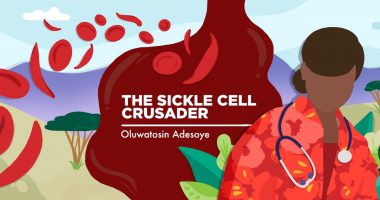Scientists Correct Mutated Gene that Causes Sickle Cell Disease in Stem Cells

For the first time, scientists were able to correct the genetic mutation that causes sickle cell disease in stem cells.
In a collaborative effort, researchers at UC Berkeley, UC San Francisco Benioff Children’s Hospital Oakland Research Institute (CHORI), and the University of Utah School of Medicine fixed the mutation in modified stem cells from patients with the condition using a CRISPR/Cas9 gene editing approach.
The study, “Selection-free genome editing of the sickle mutation in human adult hematopoietic stem/progenitor cells,” was published in the journal Science Translational Medicine.
The scientists hope to re-infuse patients with the modified stem cells and alleviate disease symptoms.
“We’re very excited about the promise of this technology,” Jacob Corn, senior author on the study and scientific director of the Innovative Genomics Initiative at UC Berkeley, said in a news release. “There is still a lot of work to be done before this approach might be used in the clinic, but we’re hopeful that it will pave the way for new kinds of treatment for patients with sickle cell disease.”
The researchers observed in mice tests that after transplants, the modified stem cells stuck around for about four months, an important target of the long-lasting potential of any therapy.
“This is an important advance because for the first time we show a level of correction in stem cells that should be sufficient for a clinical benefit in persons with sickle cell anemia,” said Mark Walters, a pediatric hematologist and oncologist and director of UCSF Benioff Oakland’s Blood and Marrow Transplantation Program and co-author of the study.
Sickle cell disease (SCD) is a genetic disorder caused by a mutation in one of the hemoglobin genes, which causes deformation of red blood cells and results in obstruction of blood vessels, severe pain crises, and progressive organ injury. SCD affects at least 90,000 mostly African-American people in the United States and hundreds of thousands worldwide.
To correct the mutation that causes the disease, the team modified hematopoietic stem cells from patients with SCD using a CRISPR/Cas9 gene editing approach. The corrected cells successfully produced enough normal hemoglobin, which mutated cells do not make at all.
This approach may have a potential clinical benefit in the setting of sickle cell disease, the researchers noted. However, the method needs further optimization, large-scale mouse studies, and rigorous safety analysis. Corn’s team is partnering with Walters for an early-phase clinical trial to test this new approach.
The approach may be applied to other blood diseases, including chronic granulomatous disease and severe combined immunodeficiency (SCID).
“Sickle cell disease is just one of many blood disorders caused by a single mutation in the genome,” Corn said. “It’s very possible that other researchers and clinicians could use this type of gene editing to explore ways to cure a large number of diseases.”
“There is a clear path for developing therapies for certain diseases,” said co-senior author Dana Carroll of the University of Utah, who co-developed one of the first genome editing techniques over a decade ago. “It’s very gratifying to see gene editing technology being brought to practical applications.”
The work is the fruit of the Innovative Genomics Initiative, a collaborative effort between UC Berkeley and UCSF comprising world-renowned laboratories working together toward common research goals in the field of genome engineering and genetic editing.
The multi-institutional team is working toward correcting DNA mutations that cause diseases using CRISPR-Cas9, an efficient and reliable technology developed to make precise, targeted changes to the genome of living cells. The research project also leverages the know-how of researchers and doctors at the UCSF Benioff Children’s Hospital Oakland, a major center in sickle cell disease, and Carroll’s proficiency in genome engineering.






